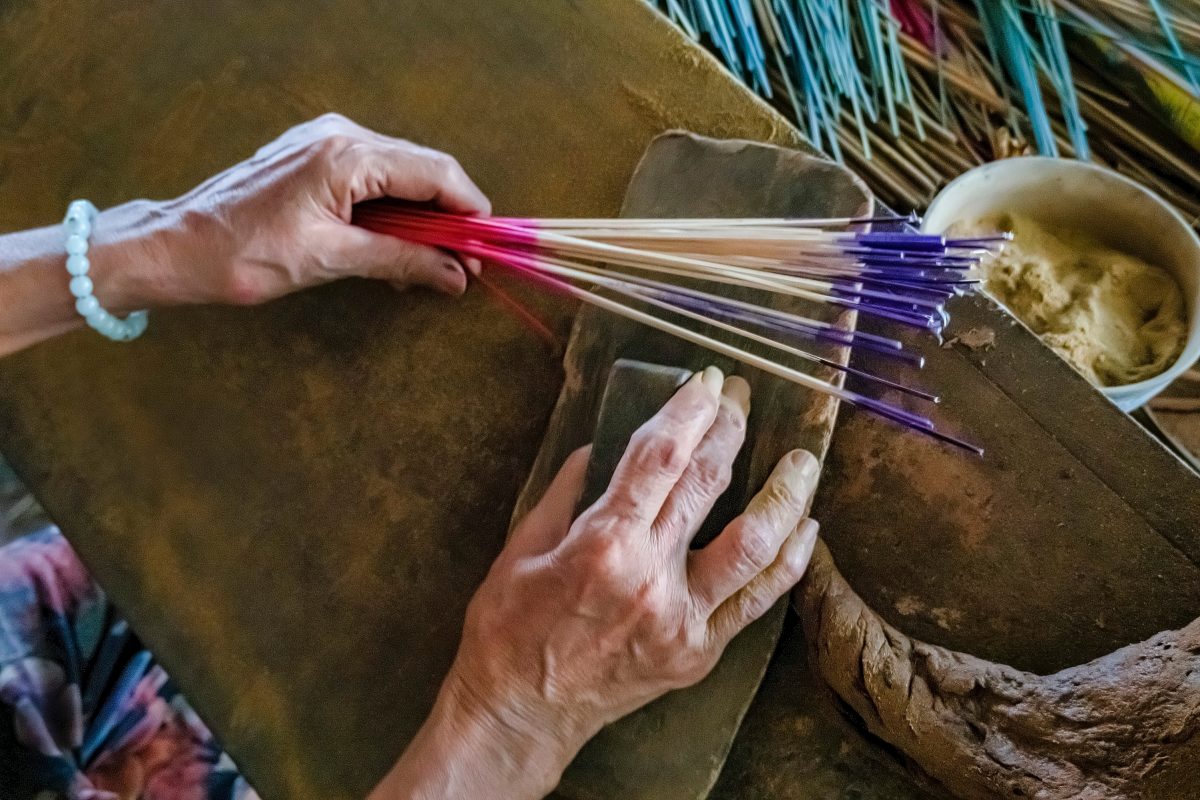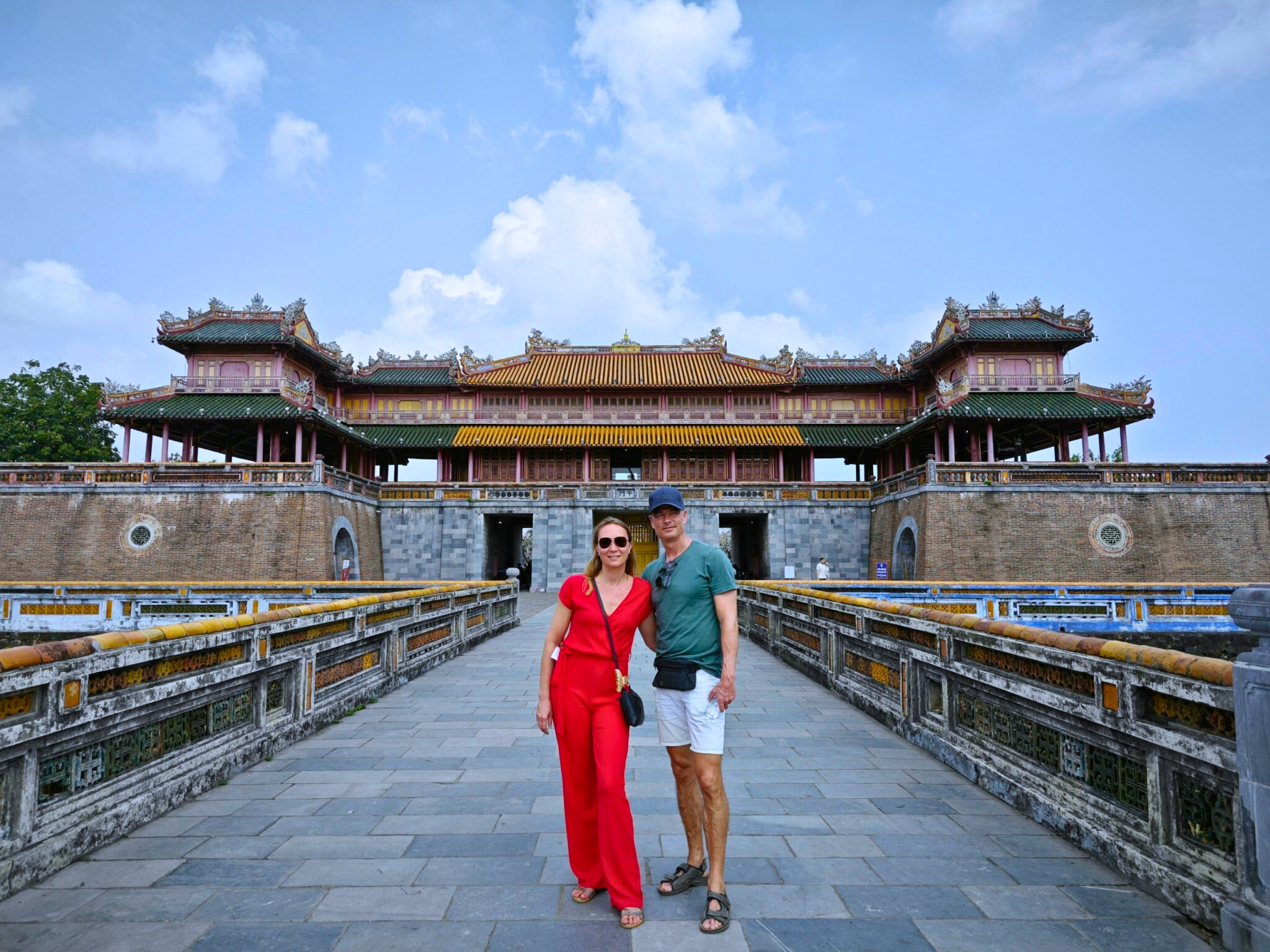Incense Village Hue: A Complete Guide to Vietnam’s Fragrant Cultural Heritage
Hidden along the banks of the Perfume River, just 7 kilometers southwest of Hue’s ancient citadel, lies Thuy Xuan Incense Village – a place where centuries-old traditions blend with the rhythmic poetry of daily life. I’ll take you through everything you need to know about this fascinating destination that captivates both tourists and cultural enthusiasts alike.
What Makes Thuy Xuan Incense Village Special?
Unlike mass-produced incense factories, Thuy Xuan Village maintains its artisanal approach, with over 100 households dedicating their lives to this ancient craft. The village has been producing incense for more than 400 years, making it one of Vietnam’s oldest continuous craft villages.

The Art of Traditional Incense Making
Having observed master craftsmen at work, I can tell you that incense making in Hue is far more complex than it appears. The process involves several meticulous steps that require both skill and patience.
Raw Materials and Their Significance
The quality of incense depends entirely on its ingredients. In Thuy Xuan, artisans use:
“The soul of our incense lies in the harmony of natural elements – each ingredient must be perfect, or the entire batch is ruined.” – Master craftsman Nguyen Van Duc, 4th generation incense maker
| Ingredient | Source | Purpose |
|---|---|---|
| Bamboo core | Local bamboo groves | Provides structure and burns evenly |
| Agarwood powder | Central Highland forests | Creates the signature fragrance |
| Cinnamon bark | Quang Nam Province | Adds warmth and complexity |
| Sandalwood | Imported from India | Enhances spiritual properties |
| Natural dyes | Flowers and plants | Creates vibrant colors |
The Production Process: Step by Step
Want to understand how these fragrant sticks come to life? Here’s the detailed process I’ve documented during my visits:
- Bamboo preparation: Fresh bamboo is cut into thin sticks, typically 30-40cm long
- Powder mixing: Aromatic powders are blended with natural adhesives in specific ratios
- Coating application: Workers skillfully roll bamboo sticks in the powder mixture
- Drying process: Incense is arranged in bundles and dried under the sun for 2-3 days
- Color dyeing: Natural dyes are applied to create the village’s signature rainbow effect
- Final drying: Another round of sun-drying ensures longevity and fragrance retention

Best Time to Visit Thuy Xuan Incense Village
Timing your visit correctly can make the difference between a good experience and an unforgettable one. Based on my multiple visits throughout the year, here’s what you need to know:
Peak production season (January – March): This is when you’ll see the most activity. Families prepare for Tet (Vietnamese New Year) demand, and the entire village buzzes with energy. However, expect more tourists during this period.
Ideal photography conditions (April – June): The combination of good weather and moderate production creates perfect conditions for photography. Morning light between 6-8 AM offers the best illumination for those Instagram-worthy shots.
Quiet cultural immersion (September – November): Fewer tourists mean more intimate interactions with artisans. This is when you can truly engage with the craft and perhaps even try your hand at making incense.
How to Get to Incense Village from Hue City
Getting to Thuy Xuan Village is straightforward, but knowing your options helps you plan better. Here’s a comprehensive guide based on different travel preferences:
By Motorbike (Recommended for Adventurers)
- Distance: 7km from Hue city center
- Duration: 20-25 minutes
- Route: Take Nguyen Sinh Cung Street → Turn onto Huyen Tran Cong Chua Street → Follow signs to Thuy Xuan
- Cost: Rental bikes from 120,000-150,000 VND/day
By Taxi or Grab
- One-way fare: 80,000-100,000 VND
- Tip: Negotiate a round-trip fare with waiting time (approximately 250,000-300,000 VND)
By Organized Tour
Many operators include the incense village in their Hue cultural tours. This option typically includes:
- Transportation
- English-speaking guide
- Incense-making demonstration
- Combined visits to other attractions
What to Expect During Your Visit
Let me paint a picture of what awaits you at this traditional craft village. As you approach Thuy Xuan, the first thing that hits you is the aroma – a complex blend of sandalwood, cinnamon, and other exotic fragrances that seems to hang in the air like an invisible welcome mat.
Interactive Experiences
Unlike passive tourist attractions, Thuy Xuan encourages participation. Most workshops offer:
- Hands-on demonstrations: Try rolling your own incense sticks under expert guidance
- Photo opportunities: Artisans are generally happy to pose with their colorful creations
- Cultural exchanges: Learn about the spiritual significance of incense in Vietnamese culture
- Shopping opportunities: Purchase authentic handmade incense directly from producers
Cultural Significance and Spiritual Aspects
Understanding the deeper meaning behind incense production enriches your visit immeasurably. In Vietnamese culture, incense serves as a bridge between the physical and spiritual worlds.
According to traditional Vietnamese beliefs, incense smoke carries prayers and wishes to ancestors and deities. This isn’t just folklore – it’s a living tradition practiced daily in homes, temples, and pagodas across Vietnam.
Religious and Ritual Uses
| Occasion | Type of Incense | Significance |
|---|---|---|
| Ancestor worship | Sandalwood-based | Shows respect and maintains spiritual connection |
| Temple ceremonies | Agarwood blend | Purifies space and attracts positive energy |
| Tet celebrations | Multi-colored bundles | Welcomes prosperity for the new year |
| Wedding rituals | Rose and jasmine scented | Blessing for the couple’s future |
Photography Tips for Incense Village
As someone who has photographed this village extensively, let me share professional tips for capturing its essence:
Best Shooting Locations
- The main courtyard: Where families lay out incense bundles in geometric patterns
- Workshop interiors: Capture artisans at work with natural window light
- Along the village path: Incense drying on bamboo racks creates leading lines
- From elevated positions: Some homes allow roof access for aerial shots
Technical Recommendations
For optimal results, consider these settings:
Golden hour shooting: f/5.6, ISO 200-400, 1/250s
Detail shots: f/2.8-4, ISO 100-200, 1/500s
Wide village scenes: f/8-11, ISO 100, 1/125s
Shopping Guide: What to Buy and Fair Prices
Supporting local artisans through purchases helps preserve this traditional craft. Here’s what you should know about buying authentic Hue incense:
Product Types and Pricing
- Standard incense bundles (100 sticks): 20,000-30,000 VND
- Premium agarwood incense (50 sticks): 50,000-80,000 VND
- Decorative colored sets: 40,000-60,000 VND
- Specialty blends (meditation/temple use): 100,000-150,000 VND
- Gift sets with holders: 150,000-300,000 VND
Quality Indicators
Not all incense is created equal. Look for these signs of quality:
- Even coating: The powder should be uniformly distributed
- Natural fragrance: Avoid overly chemical smells
- Proper drying: Sticks should be completely dry, not damp
- Artisan signature: Many quality producers mark their products
Sustainable Tourism and Community Impact
As this village gains popularity, responsible tourism becomes crucial. The influx of visitors has both positive and negative impacts on the community.
According to sustainable tourism principles, visitors should:
- Respect private property and ask permission before photographing
- Purchase directly from artisans rather than middlemen
- Avoid touching products without permission
- Keep noise levels respectful during production hours
- Dispose of waste properly
Combining Your Visit with Other Hue Attractions
Maximize your time in Hue by combining the incense village with nearby attractions. Here’s an optimized itinerary:
Morning Circuit (7 AM – 12 PM)
- Thuy Xuan Incense Village (2 hours)
- Thanh Toan Bridge – Historic Japanese-style covered bridge (30 minutes)
- Local market visit – Experience rural Vietnamese commerce (45 minutes)
Afternoon Options (1 PM – 5 PM)
- Return to Hue: Visit the Imperial City
- Perfume River cruise: Sunset boat trip with dinner
- Thien Mu Pagoda: Iconic seven-story pagoda
Conclusion: Why Incense Village Deserves Your Visit
After numerous visits to Thuy Xuan Incense Village, I can confidently say it offers one of the most authentic cultural experiences in Central Vietnam. It’s not just about watching incense being made – it’s about understanding a living tradition that connects modern Vietnam with its ancient roots.
Whether you’re a photographer seeking vibrant subjects, a culture enthusiast wanting authentic experiences, or simply a traveler looking for something beyond typical tourist attractions, this village delivers. The combination of visual beauty, cultural depth, and warm hospitality makes it an essential stop on any Hue itinerary.
Remember, the best experiences come from approaching with respect, curiosity, and an open mind. Take time to engage with the artisans, understand their craft, and appreciate the cultural significance of what might seem like simple colored sticks. In doing so, you’ll discover that Thuy Xuan Incense Village offers far more than just a photo opportunity – it provides a window into the soul of Vietnamese tradition.




